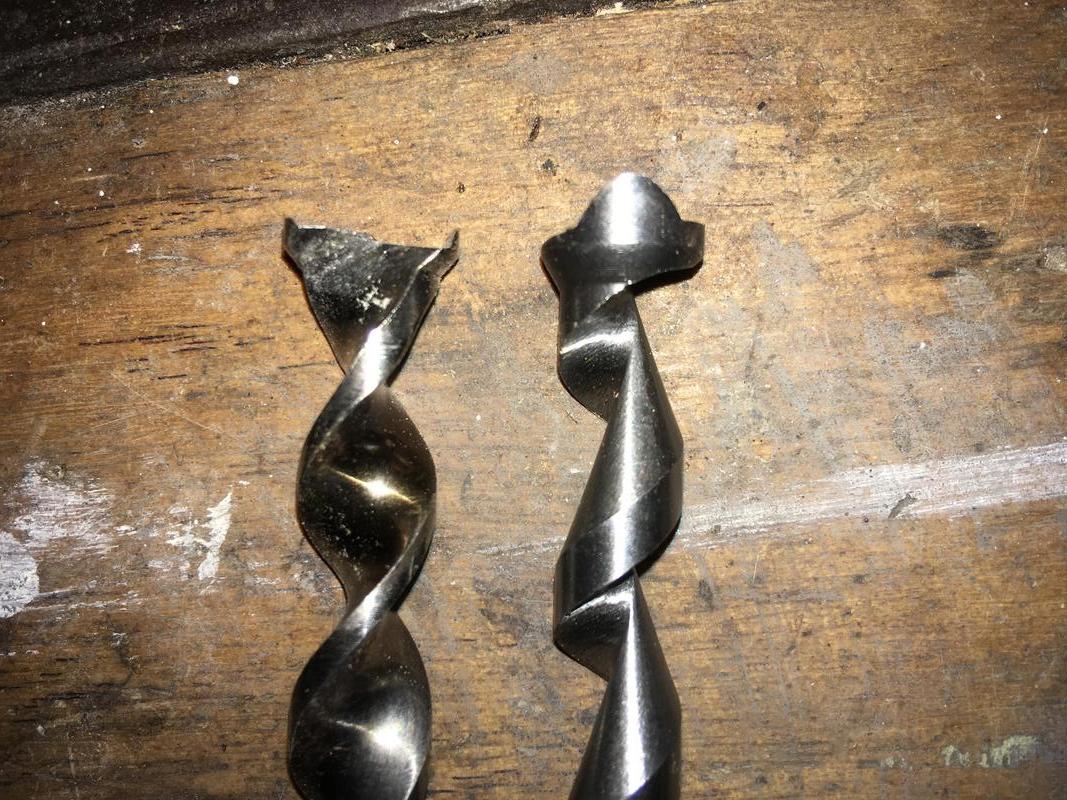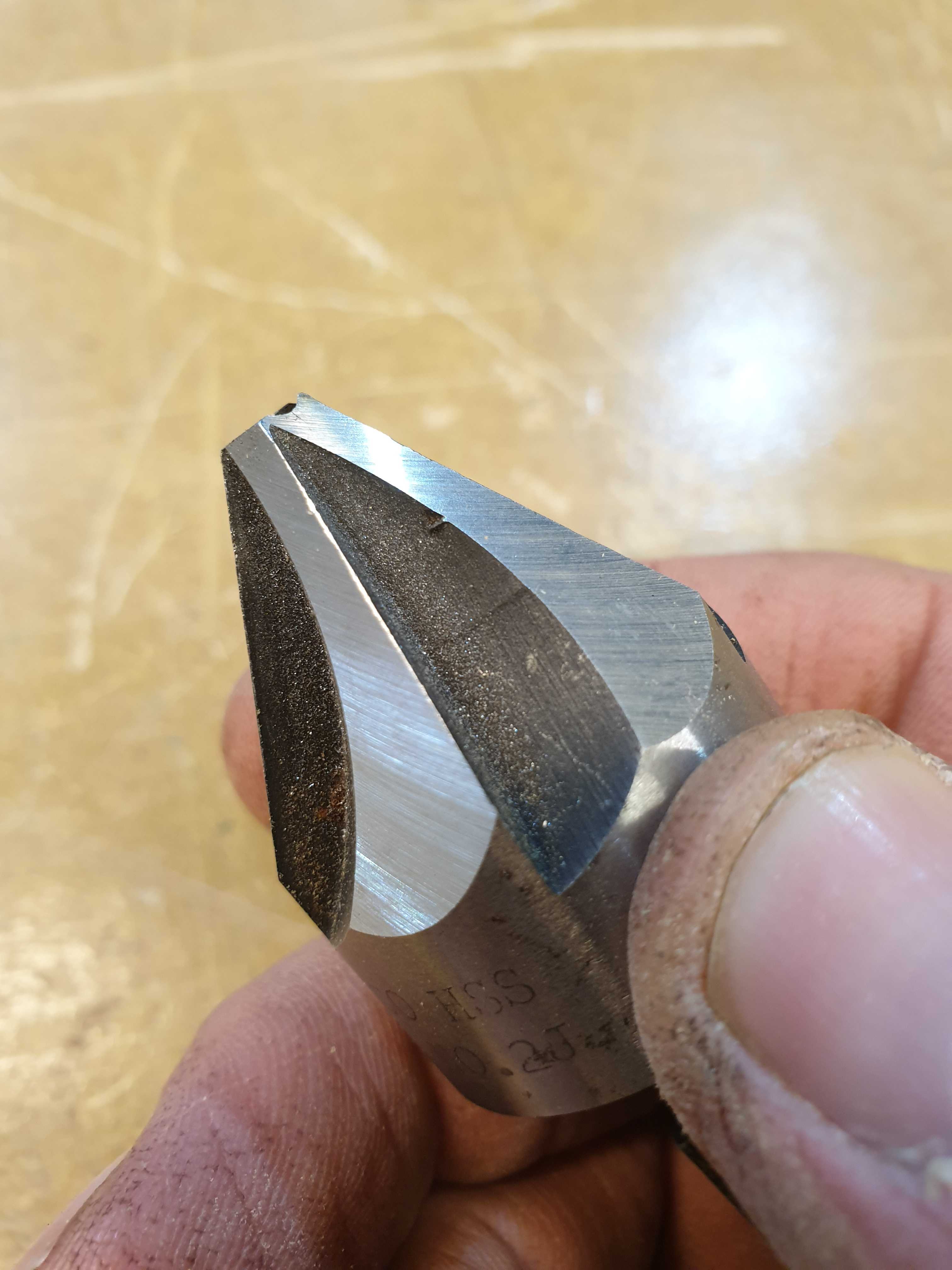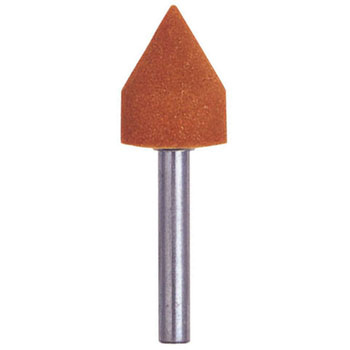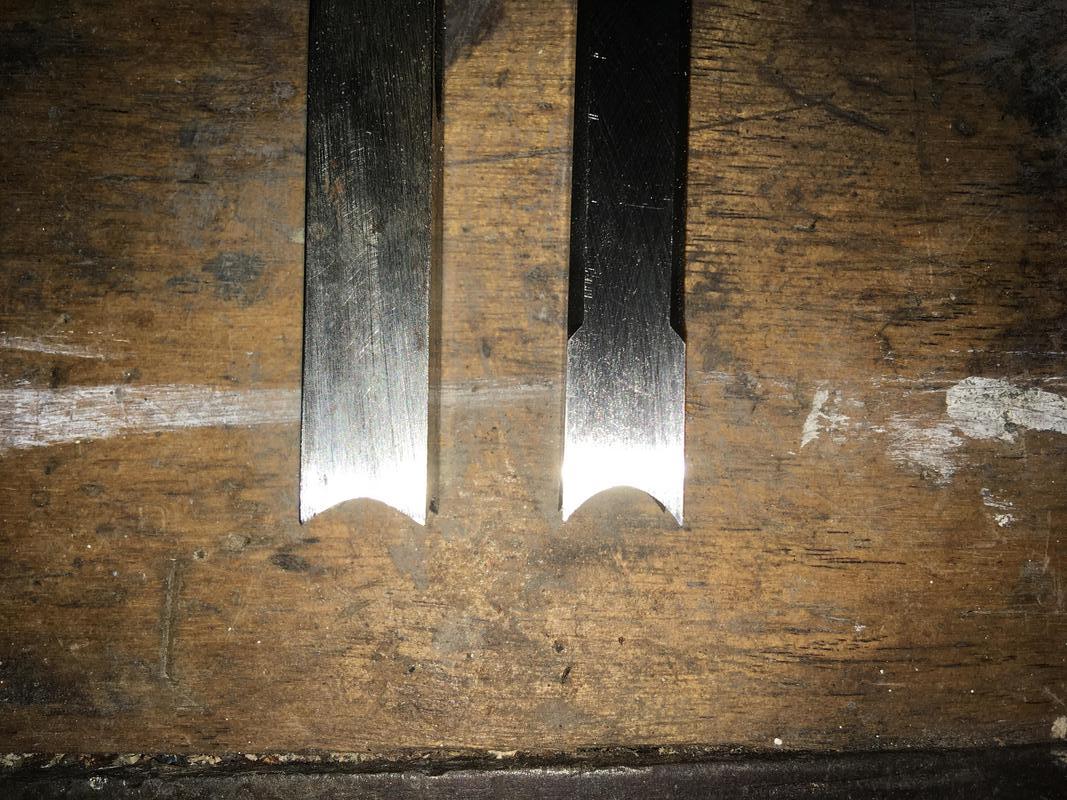I got some pictures for you

Fairly unused original grind Clico chisel on the left, brand spanking new out of the tube Nakahashi (NH) chisel on the right.
Hopefully, you can see in the picture how both are ground, it was a pain to get a decent photo. The Clico has a much shallower cutting angle than the NH chisel shown by the lower arc between the points. I'm not certain what the exact angles are respectively, but I remember having a very stern telling off after sharpening an English pattern chisel with a Japanese reamer when I was an apprentice :lol: "You do a mortice with that you'll split the chisel!" So I guess it's kind of stuck with me. I've only ever split a chisel open
once but it wasn't really in the best condition anyway and had been in use for years, I've still got it somewhere as a bit of a momento. The NH chisels have quite an aggressive taper to them, the 16mm bit, for example, is 16mm at the cutting end and it's 15mm nearer the shank which helps prevent the timber from pinching the chisel, I haven't actually measured the Clico but I think it's nearer parallel.
Clico double flute auger on the left, NH single flute auger on the right.

Again, not a great photo but hopefully you can see the shallower bevel on the Clico compared to the NH. Keeping the auger in good shape is just as important as keeping the chisel sharp as the auger does the brunt of the work. With a new auger, I like to take all the burrs off the flutes with some sandpaper which really makes a day and night difference with ejection out of the box. Even when the NH chisels cost £50+ starting, they're relatively rough out of the packaging and need a little fettling with a file and sandpaper to get them cutting perfectly, but even if you don't fettle them they'd eventually wear off the burrs and work well. Snapped quite a few augers in my time, which is why I like to keep a spare set of the common sizes handy because a snapped auger can totally stop a job if you haven't got a spare, these days I've gotten pretty good at hearing the different pitch of the tool if it's getting dull though so I haven't snapped one from stress due lack of sharpening in a while.
You might find this testing Scott and Sargent did interesting, it's a bit of a one-sided test I think because they sell NH chisels and they're supreme in softwoods like the douglas fir they did the test in whilst the Clicos domain is hardwoods so of course the Clico isn't going to do well because of the fluffy chips:
https://www.scosarg.com/leaflets/NH/NH.pdf
For a machine that's the staple of the joinery trade, there's very little written and published about them. I guess hollow chisels are perhaps looked down upon as a bit "old fashioned" compared to high-speed CNC slot morticers and those oscillating chisel machines. Maybe one day I'll do a little basic write-up on it for the forum going through how to get a brand new chisel prepared for working and how to set up the machine properly since there's almost nothing to be seen that goes through this that isn't done by someone who hasn't got a clue about it themselves.








































